As a car owner, dealing with a low battery when starting your vehicle can be frustrating and inconvenient. It can leave you stranded in the middle of your morning commute or unable to start your car after a long day at work. Understanding the reasons behind this issue and the solutions can save you time and hassle.
Here, we will delve into the meaning of a low battery in your vehicle, explore the common causes of this problem, and provide professional solutions to help you get back on the road swiftly and smoothly. Let’s unravel the mystery of low battery start together!
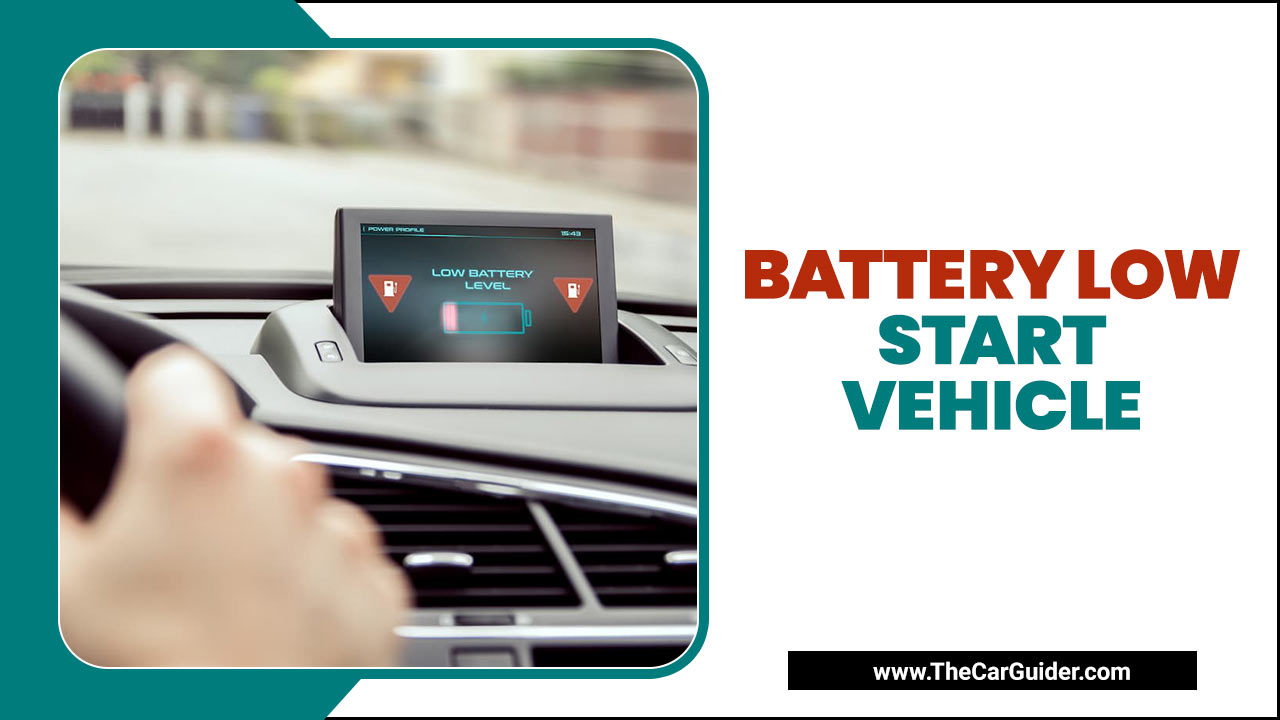
Signs That Your Vehicle’s Battery Is Low
Several signs can indicate your vehicle’s battery is low and may need to be replaced. If you experience any of these signs. A professional should test your battery to determine if it needs replacement. Some common signs include:
- Difficulty starting the engine.
- Dimming headlights and interior lights.
- Weak or slow electrical components (such as power windows).
- Warning lights on the dashboard (such as the battery or check engine light)
- The battery is more than 3 years old.
The Common Causes For A Low Battery In A Vehicle
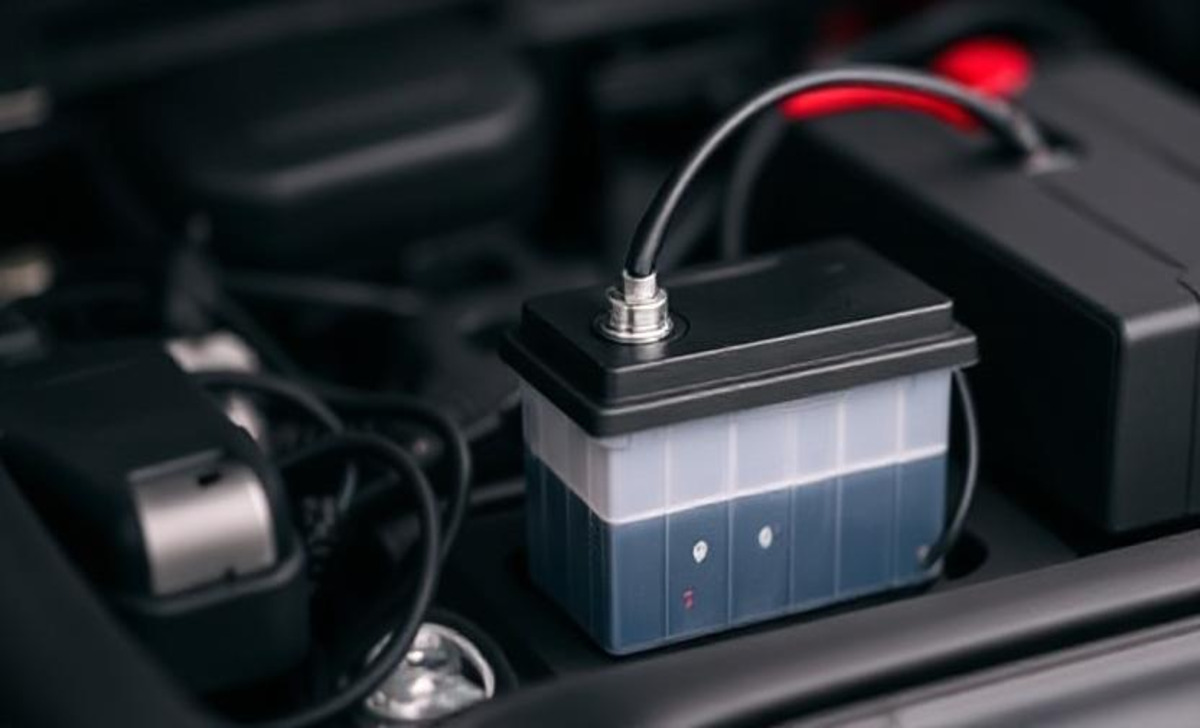
There are several common causes for a low battery in a vehicle. If you are experiencing a low battery in your car, diagnosing and addressing the underlying cause is essential. Here are some of the most common reasons why your vehicle’s battery is running low:
- Leaving Lights Or Accessories On. One of the most common causes of a low battery is leaving lights or other accessories on when the engine is not running. This can include headlights, interior lights, or even leaving a phone charger plugged in.
- Faulty Charging System: If your vehicle’s charging system is not functioning correctly, it may be unable to charge the battery while the engine is running properly. This can lead to a depleted battery over time.
- Fuse problem: The fuse box contains multiple fuses responsible for different electrical components in the vehicle.
- Extreme Temperatures: Extreme temperatures, both hot and cold, can strain your vehicle’s battery, causing it to drain more quickly.
- Battery Age: Over time, batteries lose their ability to hold a charge. If your battery is old or nearing the end of its lifespan, it may be more prone to running low.
Despite Having Battery Low Start Vehicle In Just 3 Effective Methods
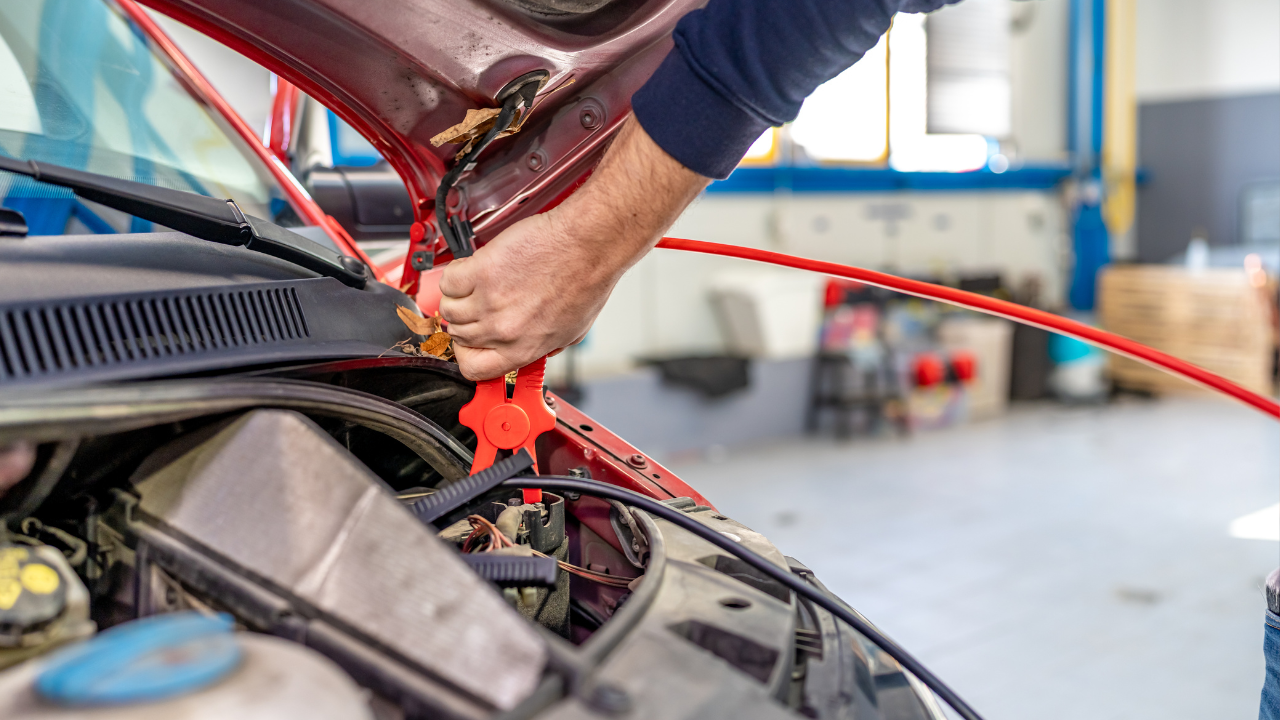
If you find yourself in a situation where your vehicle has a low battery and won’t start, there are several steps you can take to fix the issue. Here are 3 methods to help you get your vehicle up and running again:
Method 1:Using A Jump Starter
A jump starter can effectively start your vehicle when its battery is low. Here is a step-by-step guide to starting a low-battery vehicle using a jump starter:
- Turn off both cars before connecting the jump starter.
- Attach the jump starter’s red starter and the dead battery’s positive terminal.
- Connect the other red clamp to the positive terminal of the working battery.
- Attach the black clamp of the jump starter to the working battery’s negative terminal.
- Ground the final black clamp by attaching it to an unpainted metal surface on the car with the dead battery.
- Start the working vehicle and let it run for a few minutes to charge the dead battery.
- Attempt to start the vehicle with the dead battery. If it doesn’t start, don’t take a few more minutes before trying again.
- Once your vehicle starts, carefully disconnect the clamps in reverse order, beginning with the black clamp on the previously dead car.
By following these steps correctly, you can safely start your low-battery vehicle using a jump starter without causing any damage to either vehicle’s electrical system.
Method 2:Jump-Starting With Another Vehicle
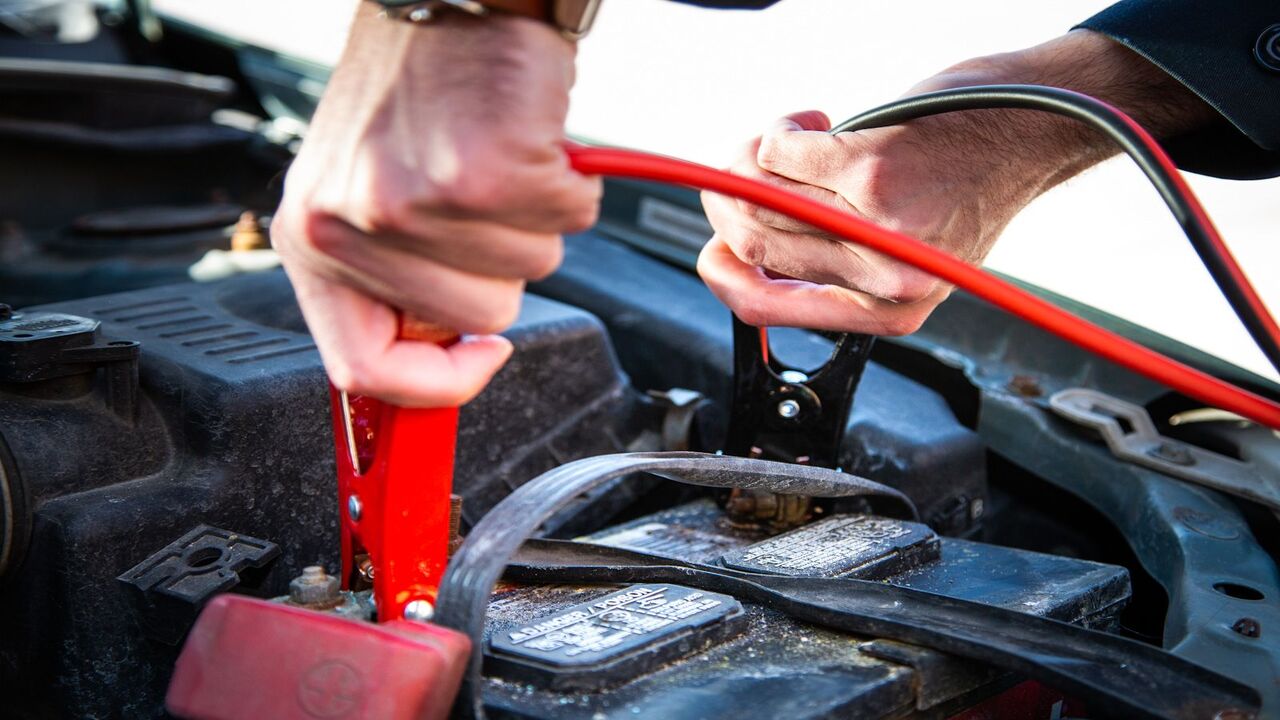
To jump-start a vehicle with a low battery, follow these steps carefully:
- Position the donor vehicle close to the dead vehicle, ensuring both are in park or neutral with the ignition off.
- Connect one end of the red jumper cable to the dead battery’s positive terminal.
- Attach the other end of the red cable to the donor battery’s positive terminal (+).
- Connect one end of the black jumper cable to the donor battery’s negative terminal (-).
- Attach the other end of the black cable to an unpainted metal surface on the dead vehicle, away from the battery and fuel system.
- Start the donor vehicle and let it run for a few minutes before attempting to start the dead car.
- Once started, leave both vehicles running and disconnect the cables in reverse order: black from the grounded metal on the dead car, black from the donor battery, red from the donor battery, and finally, red from a dead battery.
- Drive your car for at least 15 minutes to recharge your battery.
Remember, if you are unsure about jump-starting a vehicle, it is always best to contact a professional mechanic for assistance.
Method 3:Push-Starting (Manual Transmission Only)
To start a low-battery vehicle using the push-starting method with a manual transmission, follow these steps:
- Ensure the ignition is turned on.
- Depress the clutch pedal and put the vehicle in second gear.
- Ask someone to help you push the car while you steer.
- Once the vehicle gains enough speed, release the clutch quickly.
- Be prepared for a jolt as the engine starts running.
Push-starting can be an effective way to start a vehicle with a low battery, but it’s crucial to ensure safety and follow proper procedures when attempting this method.
Tips For Preventing A Low Battery In The Future
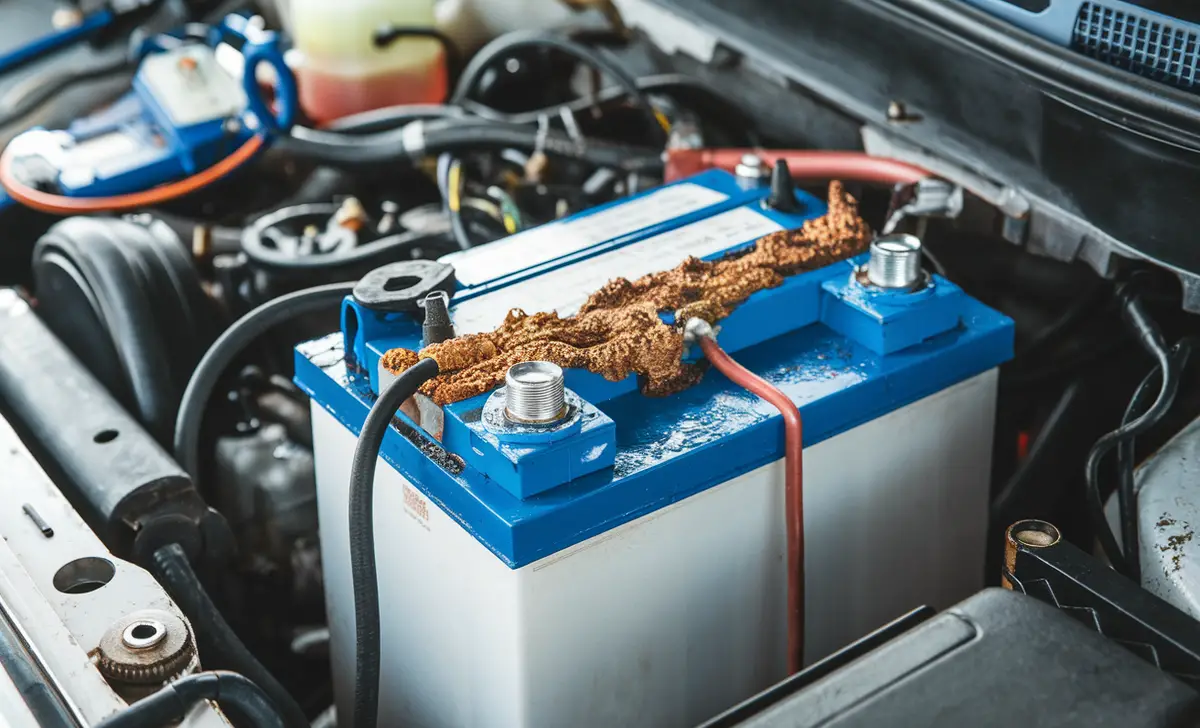
Preventing a low battery in the future is essential to avoid the inconvenience of a vehicle that won’t start. Following these tips, you can help prevent a low battery in the future and ensure that your car begins reliably whenever you need it. Here are some tips to help you keep your battery charged and prevent it from running low:
- Regularly check your battery’s health: It’s essential to monitor the health of your battery, especially if it’s older. You can do this by testing the battery voltage or using a tester.
- Drive Your Vehicle Regularly: Frequent driving helps charge your battery by allowing the alternator to recharge it. If you have multiple vehicles or don’t use your car often, consider taking it for a short drive at least once a week.
- Avoid Leaving Accessories On When The Engine Is Off: Leaving lights, radios, or other accessories on when the engine is off can drain the battery quickly. Make sure all accessories are turned off before exiting your vehicle.
- Keep Connections Clean And Secure: Over time, corrosion can build up on battery terminals and cables, impeding proper charging. Regularly inspect these connections and clean them if needed.
- Consider Using a Trickle Charger: If you don’t use your vehicle for extended periods, such as during winter storage, using a trickle charger can help maintain the battery’s position.
Conclusion
If you ever find yourself in a situation where your vehicle has a low battery, remember there are safe and effective ways to start it again. Following this guide’s proper technic, you can successfully jump-start your low-battery vehicle and get back on the road quickly.
Take care of your vehicle’s potential for its longevity and performance, so always be prepared with the knowledge to handle such situations. Starting a low-battery vehicle with the right approach can be straightforward, ensuring you’re never stranded.
Frequently Asked Questions
1.What Are The Consequences Of Neglecting A Low Battery In A Vehicle?
Neglecting a low battery in a vehicle can lead to various consequences, including difficulty starting the engine, reduced performance of electrical components, increased strain on the alternator, potential stalling, and, eventually, complete battery failure.
It is essential to promptly address a low battery warning to avoid being stranded due to a dead battery.
2.How To Charge A Low Battery In A Vehicle?
To charge a low battery in a vehicle, you will need jumper cables and a functioning battery source, such as another vehicle with a charged battery. Follow these steps:
Connect the positive (red) cable to both positive terminals, the negative (black) cable to the charged battery, and an unpainted metal surface on the dead car. Start the charged car first, then the dead one. Disconnect the cables in reverse order and drive for 30 minutes to recharge.
If the battery does not hold a charge or the issue persists, it may indicate a failing battery, alternator, or other electrical system issues. It is recommended that a professional mechanic inspect the vehicle.
3.What Happens If You Start A Car With A Dead Battery?
If you start a car with a dead battery, the alternator will need to work harder to charge it, potentially straining the alternator and other electrical components.
This can further damage the vehicle’s electronic system, including the alternator, battery, and other parts. It is recommended that a car be avoided starting with a dead battery, and instead, it be jump-started or replaced if necessary.
4.What Are Some Additional Drains On Your Car Battery?
5.What Are The Safety Precautions For Starting A Vehicle With A Low Battery?
Safety Precautions for Starting a Vehicle with a Low Battery:
- Park the vehicle safely with ample space.
- Wear protective gear (gloves, safety glasses).
- Turn off all electrical components.
- Connect jumper cables: positive (+) and negative (-) terminals.
- Start the vehicle and let it run to charge the battery.
- Disconnect jumper cables in reverse order.
- Drive the vehicle to recharge the battery fully.
- Monitor warning lights for battery issues; seek professional help if needed.
6.How Do You Know When A Car Battery Needs New Battery?
When a car battery needs replacing, there are several signs to look out for. These can include a low battery warning light on the dashboard, difficulty starting the vehicle, a dead battery, or if the battery fails to hold a battery charge.
Other indicators may include dimming headlights, issues with the vehicle’s electrical components, or if the battery is several years old.
7.Can Low Battery Affect Car Starting?
Ans: Yes, a weak battery can affect the starting of a car. Insufficient power from the battery may make it difficult to turn the engine over. Additionally, low temperatures can further hinder battery performance and starting. Regular battery maintenance is crucial to prevent such issues in the future.
8.Can I Increase Battery Capacity?
Ans: Increasing the capacity of a battery beyond its design is impossible. However, you can replace it with a higher-capacity battery or use a secondary battery in parallel to increase overall capacity. Consult a professional before making any modifications to your vehicle’s battery.